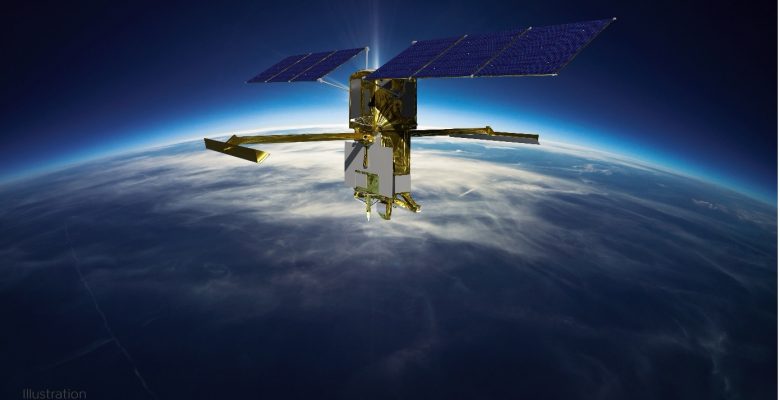Understanding small-scale ocean movements is essential to better understand the mechanisms that govern the climate system and the behaviour of many marine ecosystems. The SWOT satellite, launched in 2022, aims to meet this scientific requirement for detecting and monitoring very small-scale structures in the ocean, with unprecedented accuracy from space, as recently confirmed by the use of these new measurements.
by Laurie Henry
Cover photo: View from the SWOT satellite © CNES
Measuring sea height with sub-centimetre accuracy over distances of tens of kilometres has until now been beyond the reach of space altimetry. However, small scales play a crucial role in ocean dynamics and influence global circulation, energy exchanges at the air-sea interface and even local weather conditions.
The SWOT satellite, launched in December 2022 by NASA and its international partners, has tackled this challenge of detailed observation using a novel radar technology: the Ka-band interferometer (KaRIn). A team of researchers recently published a validation of SWOT’s measurement accuracy in the journal Geophysical Research Letters. By comparing satellite data with a dense network of ocean sensors, they even demonstrate that SWOT far exceeds its initial objectives in terms of measurement accuracy.
A new generation of altimetric measurements
The SWOT mission is based on a technology that is unprecedented in the field of space altimetry: the Ka-band Radar Interferometer (KaRIn). Unlike conventional altimetry satellites, which take linear measurements along a single trajectory, KaRIn offers two-dimensional altimetry. Specifically, it measures the height of the water surface over two wide bands 50 km wide on either side of the satellite’s trajectory, separated by a 20 km gap. This detailed bilateral mapping enables SWOT to observe ocean phenomena on a very small scale, between 20 and 100 km, which was previously out of reach.
The instrument measures sea level relative to a reference surface, after correcting for several factors such as atmospheric pressure, tides, tropospheric humidity and the effect of waves. The residual signal thus obtained contains the dynamic information sought.
The main challenge is to achieve sufficient accuracy to capture surface variations of a few millimetres to a centimetre over short distances. To meet this requirement, the mission has set strict thresholds. For example, for a 2 km by 2 km grid, the permissible error must be in the order of a millimetre. The finer the details observed, the smaller the margin of error must be. These specifications are the most rigorous ever imposed on an altimetry satellite.
According to Jinbo Wang, co-lead author of the recently published study, this approach marks a methodological breakthrough in ocean measurement. The SWOT satellite not only observes major ocean trends, but also captures the fine details that shape the local movements of water masses.
